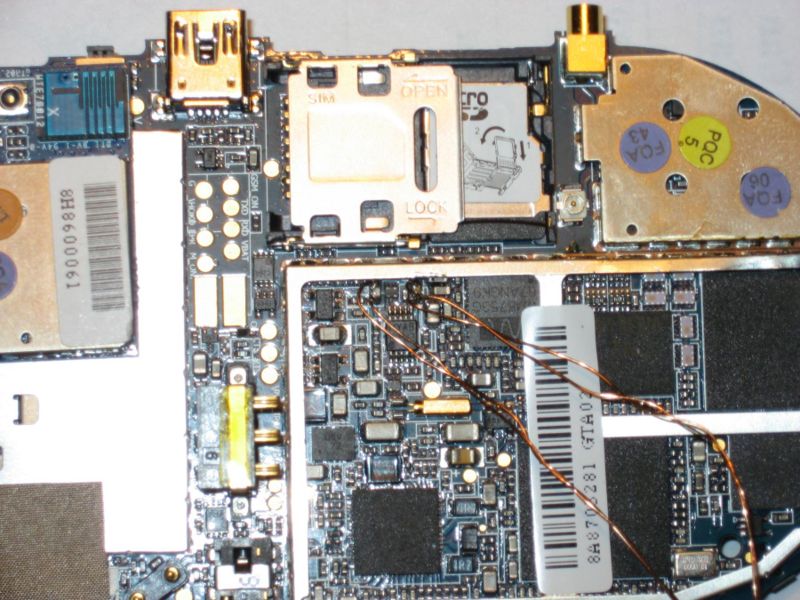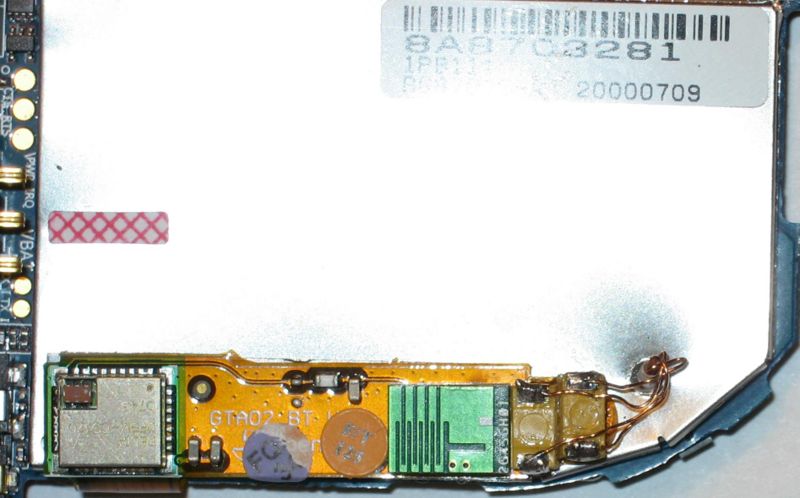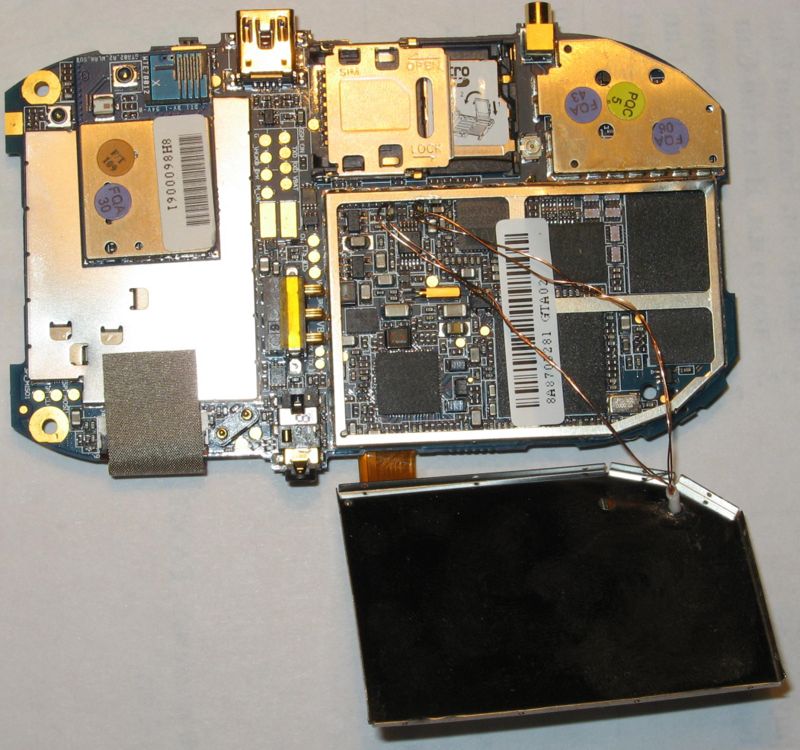GTA02 bass fix
From Openmoko
GTA02 bass issues and possible ways to fix it
Contents |
The problem description
A known issue is that output decoupling capacitors are too small, only 1uF (4.7uF in v7). This results in a very high cut-off frequency practically eliminating a possibility to use freerunner as a portable musical player. The possible fix is to add some decent 100uF C in parallel.
One possible solution is to place the additional caps outside the can, near the Bluetooth antennae; the other possibility is to build a cap from 20 pieces 4.7uF along a wire grid 4x5 which makes a nice high quality very flat 100uF. This would easily fit anywhere "1.floor" of can interior, just isolate it with a scotch film patch and throw them inside the can.
Rework performed by Paul Fertser
Resulting sound is good with 32Ohm headphones (AKG K-55). With proper shielding GSM interference is very low or non existent. Effect on Bluetooth range is not yet measured!
Here i'll try to describe my take on rework that should radically improve the ability to use FreeRunner as a portable music player.
This rework is fully based on information from Joerg Reisenweber (e.g. in this mailing list post: http://lists.openmoko.org/pipermail/hardware/2008-September/000552.html , and several others, also he was very helpful on IRC). If you decide to short the original caps, you should also remove R4116, R4117 and place them after your caps.
I used two 100uF 10V tantalum caps. They should be connected in parallel to C4110 and C4111. Make sure you connect the plus terminal (marked with a thick line) to the side that goes to U4101.
The can should be lifted very carefully. Use a pin-pointed knife for that and try to lift a little in every point you can reach going in circle. After several rounds the can will be easily dismounted. It can take about 10 minutes, please be patient. You can use a plastic sim-holder for a lever, but be very careful.
To avoid interference from GSM going into the can, use a piece of aluminium foil isolated from the caps with paper. I used a candypaper and it eliminated the audible GSM interference (i could listen to GSM call via headphones on loud volume without hearing any buzz). Be sure to provide electrical connection between the foil and the can (the more points you connect, the better shielding you get; don't be shy to experiment, EMI is a black magic sometimes). Placing small ferrite bead on every twisted pair just before it enters the can is recommended.
After the rework Bass and Treble regulators in mixer should be placed at the middle as it corresponds to 0db attenuation (and the bass boost set to Linear Control).
Blackgate iMod-like rework
Another idea proposed by Joerg is to perform a modification similar to the popular iPod mod:
The purpose of the diyMod is to simplify the signal path from the DAC to the amp. To achieve this goal, the audio signal is taken directly after the DAC and sent to the amp. This path must include the DC blocking, also known as coupling, caps. By necessity, we place DC blocking caps behind the DAC to protect our listening apparatuses. Ensure that nothing lies between your DAC and amp but wires and traces.
Nobody has tried to implement it on FreeRunner yet, but this description along with published schematics should be enough: http://www.head-fi.org/forums/f6/apple-diymod-my-take-famous-imod-56k-killer-featuring-3g-4g-5g-nano-1g-269604/
Rework performed by Andy Green
This document describes another type of rework where caps are placed inside the can: http://people.openmoko.org/andy/additional-headset-audio-caps.pdf . Among its strong points is that the signal doesn't go outside the can, therefore avoiding any possibility of interference with other hardware functions. The weak points are that the maximum capacity is limited to 47uF, only ceramic caps can be used (which can distort sound because of piezoceramic properties) and properly securing the additional caps can be hard.



